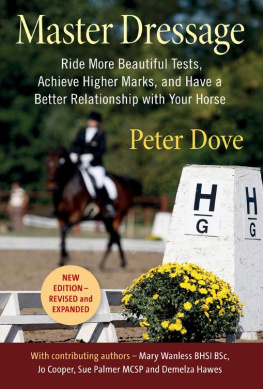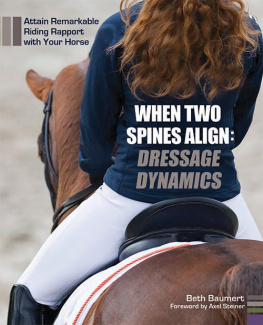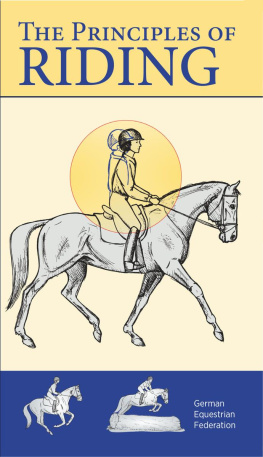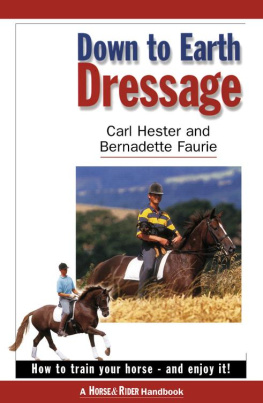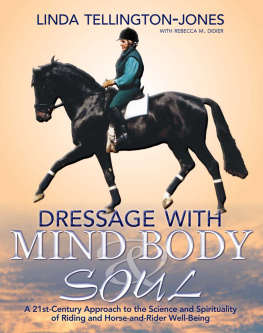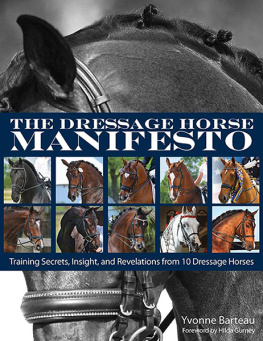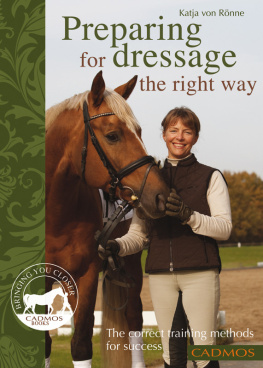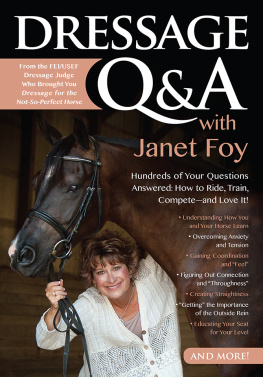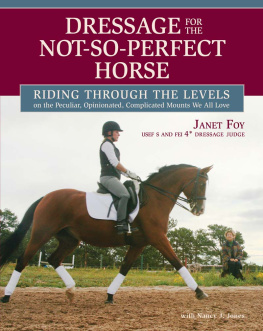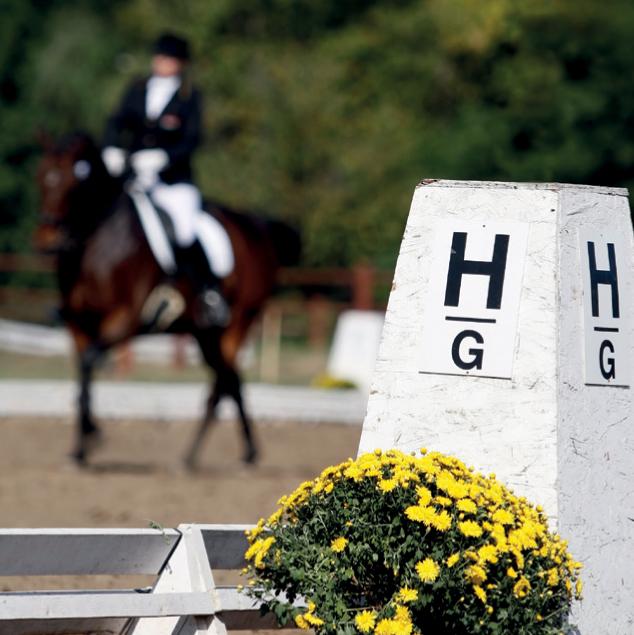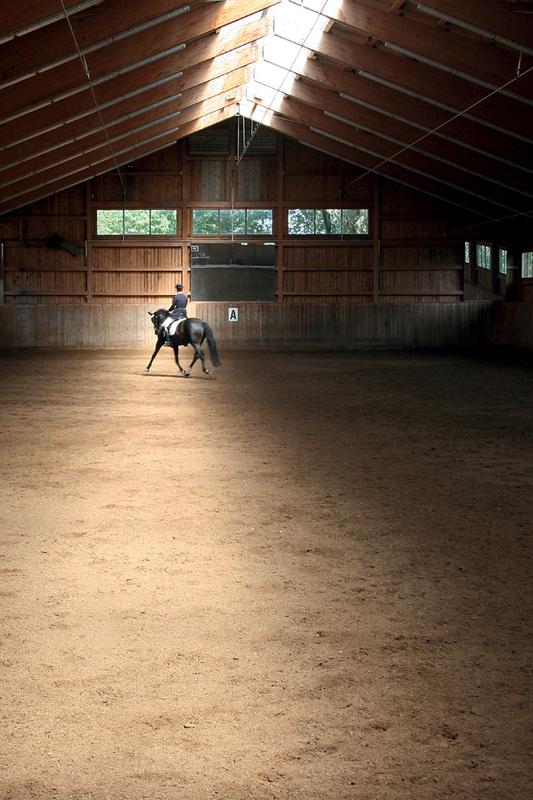N O BOOK WOULD be complete without a page of thanks and acknowledgements. At least no book of mine! There are so many people who helped to produce this book, who gave encouragement, who gave me assistance and who have, over the period I have known them, enriched my knowledge and life.
Id like to thank my wife Emma Dove, and my children Milly and Edward Dove for all their support and encouragement and for putting up with Dad being locked away in his office for so long. Also, thanks again to Milly for being brave enough to have her photos put into this book.
Id like to thank Mary Wanless BHSI BSc, without whom this would never have happened although I think no power on earth would have prevented me from discovering her teaching! Mary has had a positive effect on my life, riding and teaching. Some of the ideas presented in this book came directly from Mary and they have helped me to develop a system for improving a riders performance in dressage tests.
Thank-you very much to all the other people who have helped in preparing the book; among them were Linda Yeardley, Michael Clark, Patricia Reszetylo, my daughter Milly (in another role!) and many others who checked out various aspects of the book. A special mention goes to Karin Major, who has a sharp eye and noticed some early inconsistencies.
Thanks also to Janet Holimon Stone, who pointed out that free walk on a long rein, as defined under British Dressage rules, is referred to as stretching on a long rein under USEF/FEI rules.
Finally I would like to add a word of thanks to Iliah Borg, who helped me through a pretty rough time in my life a long time ago. He gave selflessly of his wisdom and time. Thank you Iliah.
MARY WANLESS BHSI BSc
P ETER DOVE has written about the principles of dressage and good competitive test riding, in a very accessible way that will benefit the many riders who either aspire to ride competitively, or who already do so at the lower levels. Even upper-level riders will find great advice in this book.
I have known Peter for over twenty-five years and have admired his smart, logical brain, that chimes unusually well with his feel and intuition. As well as being a rider and coach, he has played chess in international tournaments and is a maestro in computer programming. These skills combine a step-by-step understanding of the task with the vision of a desired long-term outcome, just as he has done in this book. (I, in contrast, have never even managed to learn the rules of chess!)
Peter has judged a huge number of lower-level tests and has maintained the ability to perceive those tests, and the challenges they present, from the viewpoint of a rider who struggles to perform well at those levels. He does not write as someone who thinks that these lower levels present so few challenges that they ought to be easy. He breaks down the various aspects of riding the test in helpful ways that you may not have thought of, starting with accuracy and fluidity. He then considers your understanding of the school movements, how you practise from day to day, and how you review your rides, both at home and after competition.
Peter describes the geometry of a test so well that, if you do throw away marks through inaccuracy, it will not as a result of misunderstanding the pattern you should be riding! Sadly, almost all riders make the same mistakes when they ride corners, circles, diagonal lines, serpentines, etc., so judges see these again and again. Riding the movements accurately takes an understanding of the hows and whys of the pattern you are riding, good riding skills, and focused concentration (or presence of mind). Skilled riders prepare the movements well, flow smoothly between them, and demonstrate the harmony between horse and rider that judges love to see.
Peters practical guidelines include an introduction to my own field of rider biomechanics, which elucidates the how of riding. Without this, you are more likely to make the same mistakes over and over again, even though you know that you should be getting a different result by now. With it, you are more likely to develop the skills that (for instance) prevent your horse from falling in or out through his shoulder and allow you to ride him on the line that is your choice, rather than his!
In your day-to-day training, it helps enormously to meld an understanding of the biomechanics of the rider/horse interaction with an understanding of the purpose of the school movements. How you practise at home has a huge bearing on whether or not you are able to improve your horses carriage and movement, thus improving his rideability, his athleticism, and the scores your receive in your tests. But this can only happen if you improve too! Sadly, the power of the habits that would limit your learning (the lure of those same old mistakes) is very, very strong.
Peter helps to clarify how riding skills mesh with training skills, suggesting an approach to learning that also helps you to develop an appropriate, benevolent attitude towards your horse, yourself, and your riding. This honours the challenges you face and does not gloss over difficulties. It puts you and your horse on the same team and makes you a fair taskmaster. It enables both of you to benefit from step-by-step learning.
The school movements set a specific series of challenges both individually and in the many possible sequences that you might ride, both at home and in competition. The ways they are put together in a test are designed to demonstrate the strengths and weaknesses of your training to the judge. The feedback you receive on your test sheet can really help you plan your training, as can the feedback you are receiving from your horse in each moment, and within each ride as a whole. Few people work as well with this feedback as they could, mentally reviewing their rides and learning from them. Peter makes this easier, by helping you to improve your focus, and by giving you specific tools that have value for riders at all levels.
Read this book to help you understand and develop the skills that good trainers often take for granted. Students and teachers all benefit when these are made explicit, giving a road map that can take us from point A to point B. This is a journey of increasing skills and scores, designed to bring more satisfaction to your riding.

